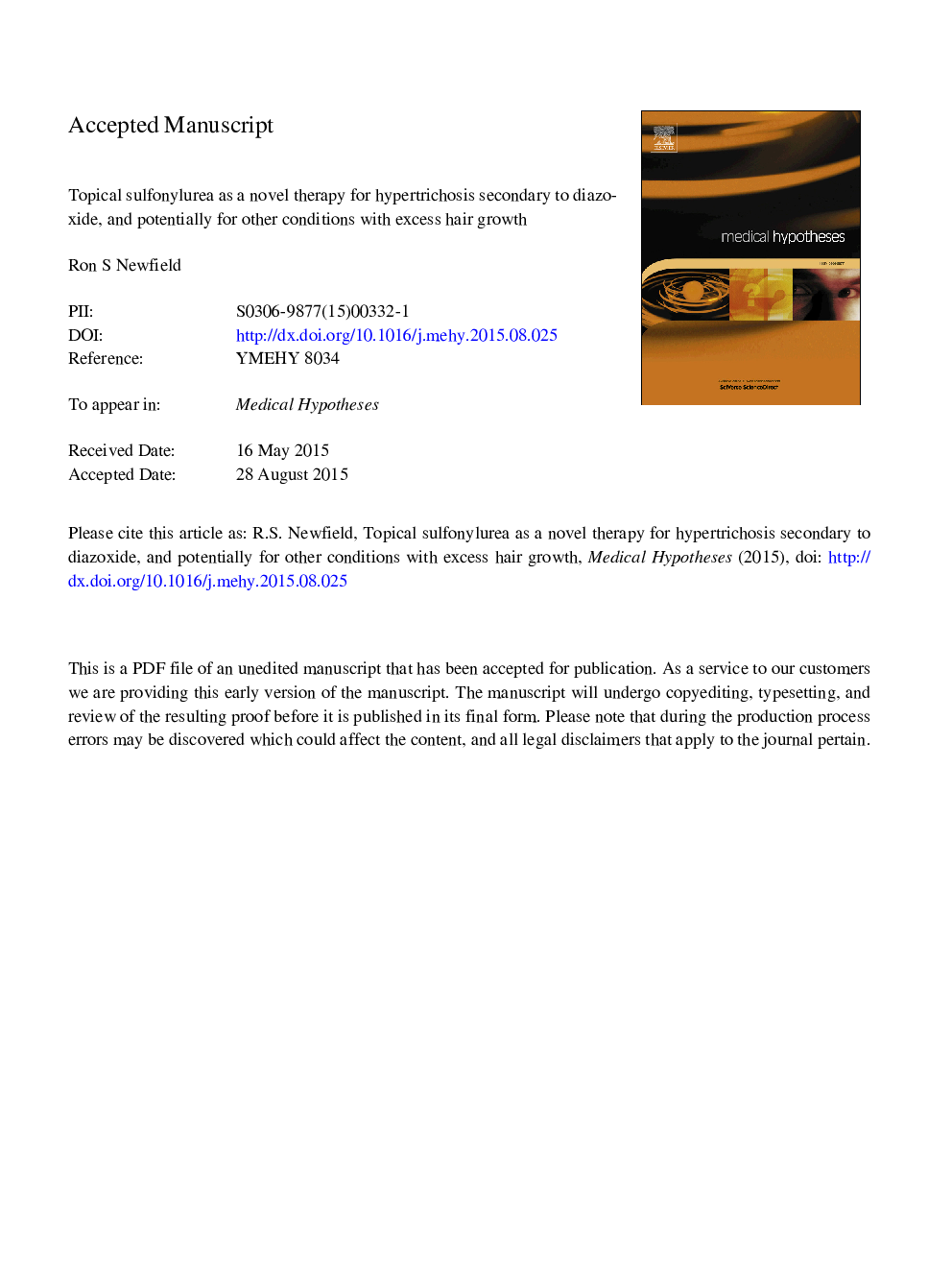| Article ID | Journal | Published Year | Pages | File Type |
|---|---|---|---|---|
| 5810854 | Medical Hypotheses | 2015 | 12 Pages |
Abstract
It is hypothesized that a topical application of a sulfonylurea drug, which can inhibit the ATP-sensitive potassium-gated channels (Kir6.X/SUR) present in human hair bulb tissues, will inhibit hair growth in a targeted manner. Diazoxide is used to treat severe hypoglycemia due to hyperinsulinism of infancy. However, this often results in hypertrichosis that can be severe enough to prevent its use. Diazoxide blocks insulin release from the pancreas by opening the SUR1/Kir6.2 channels in Ã-cells. Diazoxide can also act on two potassium-gated channels in the skin that affect hair growth, namely SUR1/Kir6.2 and SUR2B/Kir6.1, thus causing hypertrichosis. It is proposed that a topical sulfonylurea will inhibit the excessive hair growth due to diazoxide, but will not impact the beneficial effects of diazoxide on beta cells. This approach can also be applied to rare cases of Cantú syndrome, caused by mutations in ABCC9 (coding for SUR2) or in KCNJ8 (coding for Kir6.1) that is characterized by congenital hypertrichosis. More importantly, this approach may also be effective in treating other forms of hypertrichosis or hirsutism, that are quite common, yet very distressing to patients worldwide.
Related Topics
Life Sciences
Biochemistry, Genetics and Molecular Biology
Developmental Biology
Authors
Ron S. Newfield,
